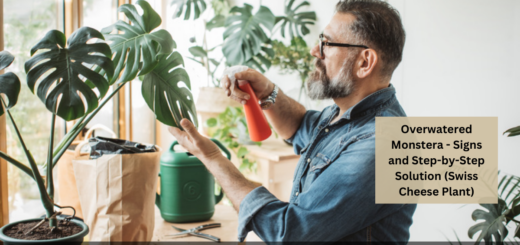Ways to Get Rid of Fungus Gnats of Monstera Plants- Monstera Gnats
Even if you are being careful and diligent, it’s still possible to run into a pest infestation problem. Trust me, it’s a true situation. However, monstera plants are not among the houseplants most susceptible to insects.
By reading this statement, it does not mean they are not prone to any disease or pests because they can get infested or suffer from fungal diseases.
My monstera plants were suffering from fungus gnats, and I did everything to save the plants without researching what was causing them to die. So, I don’t want you to go through the same struggle. That’s why I have explained the common insects so that you can recognize them and try to get rid of them accordingly. In the future, if you have any doubts, you can ask me in the comment section.
About Fungus Gnats:
You can recognize the Fungus gnats by their long legs transparent wings and affinity for nutrient-rich, moist soils. They are used to buzz around the plant container but don’t munch on the plant Foilage directly just like the other harmful pest do. You can find them in the soil, feasting on the plant root and the organic matter such as rotten fruit. Make sure not to leave the plant untreated because they can still cause a considerable amount of damage to the plant.
There is one more pesky insect that can cause environmental problems such as the drain fly which has the same appearance as fruit flies. They are small fuzzy insects that used to thrive in damp and decaying organic matter which you can find in and around drains, sewage systems, and compost piles.
If they get indoors it will become a nuisance, especially in the bathroom and kitchen where they are used to laying eggs in the gelatinous film found in drain pipes. If you don’t read them on time they get to multiply rapidly and will create problems for the homeowner.
The aged fungus gnats do have a lifespan of about a week and are eligible to make a significant impact in a short period such as laying up to 300 eggs when everything is provided to them in the right condition. They are considered to have the fastest turnaround and short life cycle of 3 to 4 weeks in short the population multiplied pretty quickly so it is important to take action against them when you notice their infestation on your house plant
Monstera Pests:
Talking about the monstera plant pests the most common they get infested with are mealybugs, spider mites, thrips, aphids, fungus gnats, and scale insects which are used to feed upon the nutrition-rich sap of the plant tissue that results in damaging the monstera leaves and stems of the plant. If you want to get rid of the pest infestation, the first thing is to notice which type of insect is attacking your monstera plant. the following are the explanations about the insects and ways to identify them:
1) Mealybugs:
The Mealybugs are considered a very common pest that is very difficult to eliminate. They are used to live on the sap of the plant and damage the plant. If the plant gets infested you can find them in the areas where the stems and leaves meet.
Identifying Mealybugs on Monstera with common signs of pest infestation:
- The mealybugs do look like white fuzz balls which make white cottony webs On the plant.
- They used to build a clear sticky goo called honeydew resulting in turning the leaves yellow.
- The leaves of the plant start to become wilting, pale-yellow resulting in falling off.
- If you have kept the monstera plant outside then the ants get attracted to the plant because of the wax coating done by mealybugs.
- The ants are used to getting attracted to the plant because of the black sooty substance on the leaves which tastes sweet produced by the mealybugs

2) Spider Mites:
You cannot see spider mites with your naked eyes. You need to use a magnifying device for it. They used to look like brown spots unless they didn’t start to move. They are available underneath the monstera leaves which look like clusters or small reddish-brown dots.
Identifying Spider Mites on Monstera with common signs of pest infestation:
- If the plant is infested with spider mites the leaf of the plant will turn yellow and then brown.
- You can find Small reddish-brown spots on the undersides of monstera leaves.
- They used to produce sticky goo called honeydew that is capable of attracting ants.
- The leaves will start to curl or drop.
- They are found in different colors that depend on different types of spider mites but red and black are mostly found in the US.

3) Thrips:
They are small light brown in color and consist of tiny wings. You can also identify them by their larvae which will be present in white clusters on the leaves or stems. When you see them you need to use a magnifying glass because it is quiet to see the body of the monstera plant clearly.
Identifying Thrips on Monstera with common signs of pest infestation:
- When the plant gets infested to thrips the leaf will start to discolor.
- The plant leaves will start to turn brown.
- The leaves will struggle with dehydration.
- You will find a cluster of white larvae underneath the plant leaves.
4) Aphids:
The aphids are present in different colors such as green, white, yellow, brown, red, or black consisting of wings. They are present on new monstera leaves because of their tender and easier chewable quality.
Identifying Aphids on Monstera with common signs of pest infestation:
- When they get infested by aphids they will start to curl the leaves.
- The leaves will get wilted.
- They will begin to turn yellow.
- They used to produce sticky goo called honeydew that attracts the ants.

5) Fungus Gnats:
Finding the tiny dark-colored flies flying on your monstera plant that could be fungus gnats. They get attracted to plants because of overwatering such as plants growing in wet soil. The fungus gnats are used to lay eggs in the potting soil which feed on organic matter present in the soil including monstera roots.
Identifying Fungus Gnats on Monstera with common signs of pest infestation:
- They are used to fly on the surface of Monstera plant’s soil.
- It is a small flying bug that congregates on the window of your plant.
- The leaves will start to wilting or lose vigour.
- The leaves will turn yellow.
- You will get to find them on wet soil.
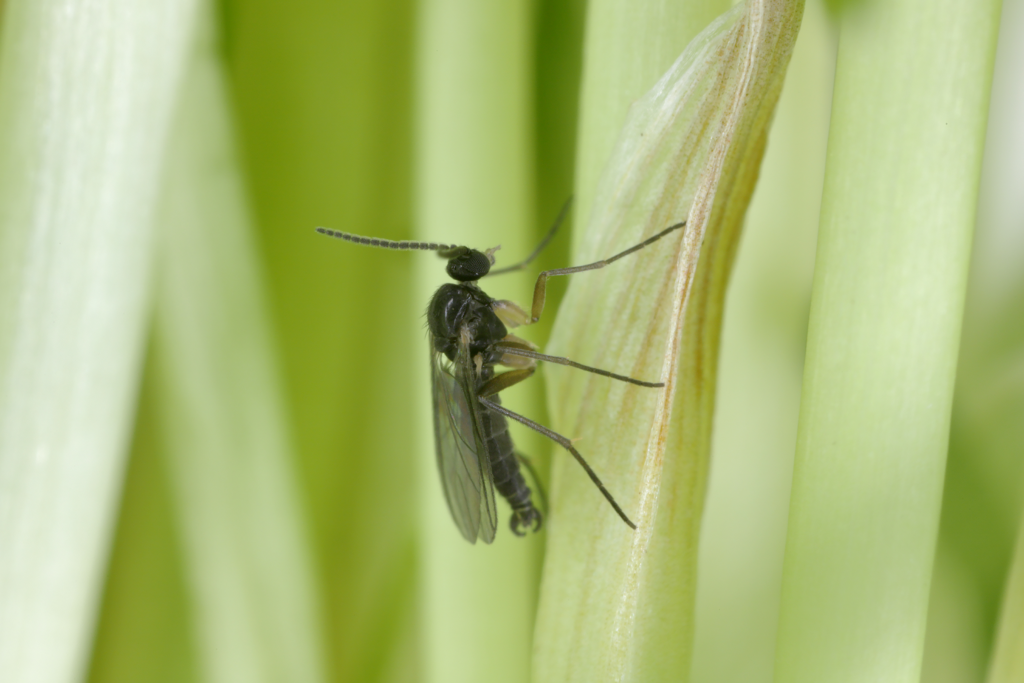
6) Scale Insects:
They are used to getting attached to the underneath of leaves and stems which feed on the plant. They are available in different colors but mostly found in a beige or brown hue.
Identifying Scale Insects on Monstera with common signs of pest infestation:
- You will find Small brown bumps underneath the leaves or stems of the monstera plants.
- They used to produce sticky goo called honeydew that attracts the ants.
- The plant will get yellow spots on the leaves.
- They are used for stunted growth.

How To Get Rid Of Gnats in Plants Naturally:
The following are some ways to get rid of Gnats on monstera plants naturally:
Let the soil dry and repot:
- If you want to prevent the growth of gnats on the Monstera plant you need to repot the house plant.
- The plants you buy from the store are used to Port it in heavily dense potting soil which is the perfect breeding place for fungus gnat larvae.
- You need to first buy a bag of fresh soil, making sure it is not infested with gnats and thrips.
- Repotting the plant is considered the most effective way to get rid of the fungus gnats and eradicate them from all the larval stages.
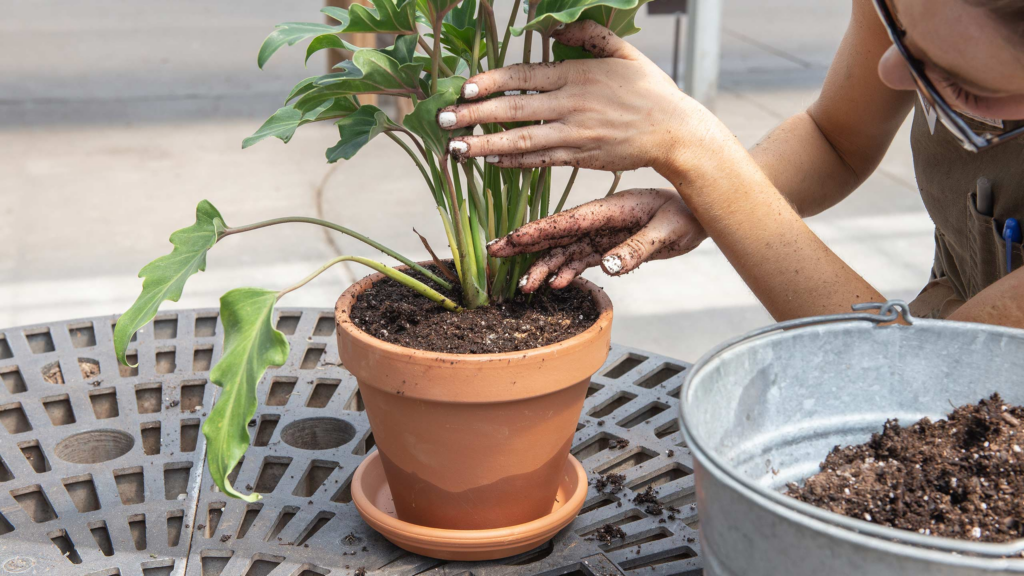
Hydrogen peroxide:
- To use hydrogen peroxide you need to mix equal parts of water and hydrogen peroxide and use the solution for watering the plant.
- It will help in targeting the larvae of the Gnats on the monstera plant without injuring the plant.
- It will help the plant with root rot conditions.
- You will notice that change after watering the plant one to two times.
- Make sure to feed the plant with fertilizer although they are good for targeting the gnats but they also kill good bacteria present in the soil.

Create a DIY gnat trap using vinegar:
- You can also get rid of the fungus gnats on the monstera plant by creating a solution of equal parts of apple cider vinegar and water in a bowl and leaving the solution as it is near the plant.
- The aged gnats will get attracted to the fragrance of the solution and will try to drink and drown.
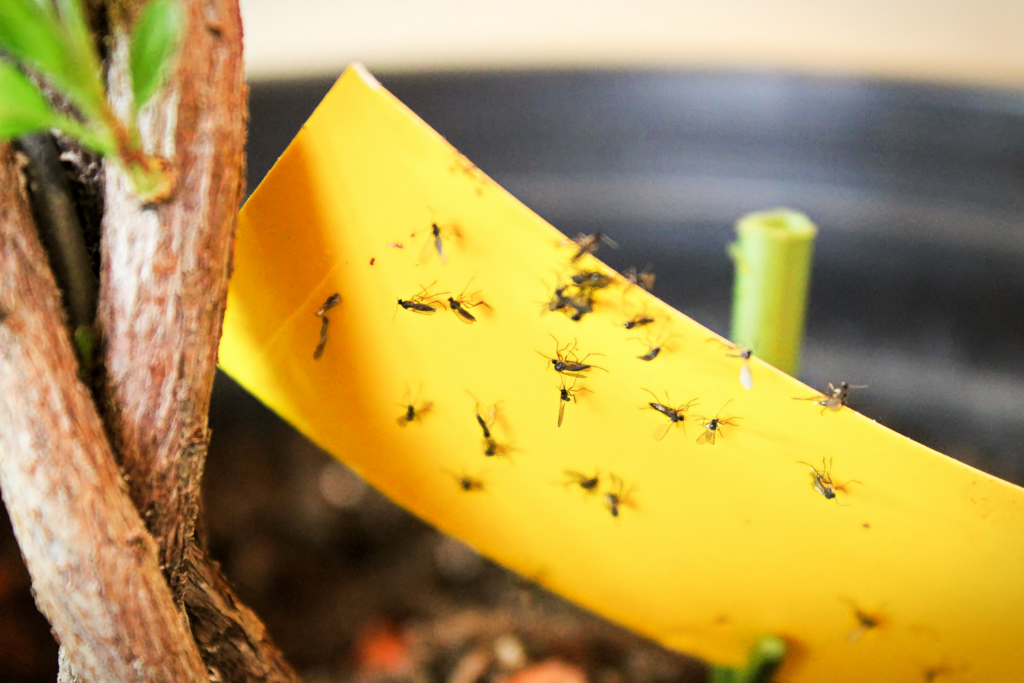
Use yellow houseplant sticky stakes:
- Use a yellow houseplant sticky stick to trap the adult fungus gnats.
- Now, put the fly trap next to the soil of the indoor plant and they often get attracted to the bright color which makes them fly to them and get stuck.
- Doing this will control the population of gnat as the adult one will not lay more eggs.
- In case the yellow stick trap Is full of the Flies you need to toss it and replace the stick.
- The yellow Stick trap is considered one of the best non-toxic Methods for killing adult fungus gnats.
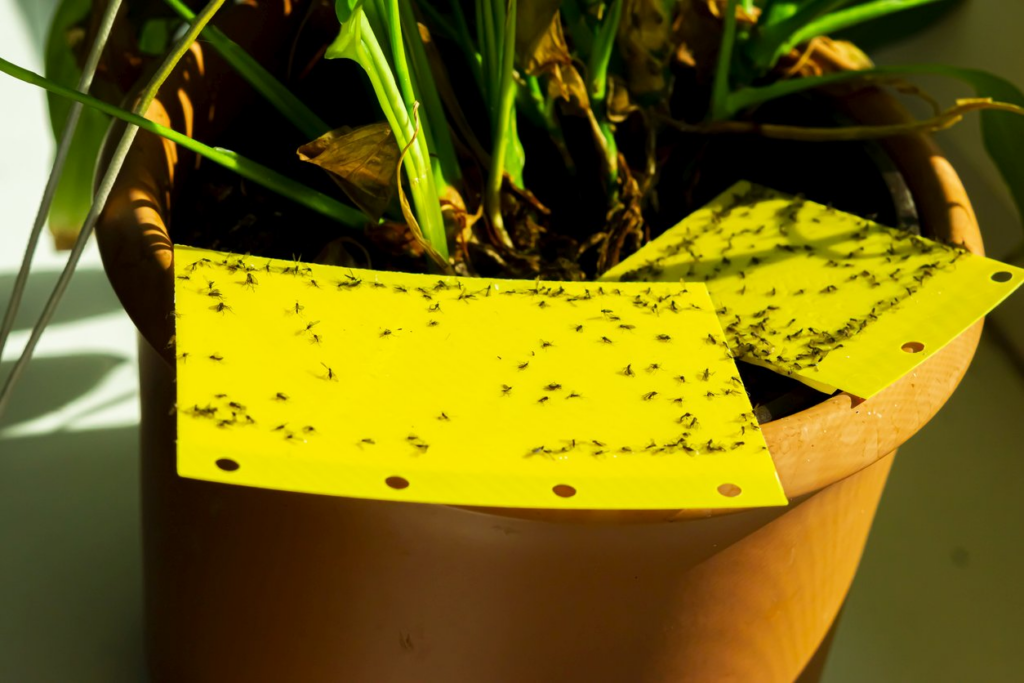
Bottom watering your plants:
- If you want to get rid of the fungus gnat of the monstera plant you need to bottom water the plant instead of top watering.
- For this, you need to keep the plant in a tub or a bathtub that is filled with water so that it slowly absorbs the water with the help of a drainage hole and make sure to pull off the plant before the entire soil is saturated.
- Doing this will help keep the top of the soil dry because the fungal larval is not able to grow in dry soil.

Beneficial insects:
- Using beneficial insects is considered a great and non-toxic way to treat the house plant suffering from pests.
- If you want to get rid of the fungus gnats on the Monstera plant you can use nematodes.
- Nematodes are microscopic organisms that are used to kill the fungus gnat larvae that used to live on the soil of the plant.
- Make sure to follow all the instructions written on the package for treating gnats from Nematodes.
- Nematodes are considered the effective way to get rid of fungus gnats.
Mosquito Bits:
- They used to sell it as granules.
- The mosquito bits consist of an active ingredient which is a biological larvacide called BTI.
- Actually, you can water the plant using mosquito bits or you can also place the mosquito bits on the soil after watering them.
Proper Watering and Drainage:
- If you want to get rid of fungus gnats on monstera plants you need to make sure of watering and drainage.
- Make sure to dry out the top layer of the potting medium completely between watering which will help to eliminate larvae and deter gnats.

Soil Selection:
- You need to select a well-drained soil mix that will help to maintain the ideal moisture levels of the plants.
- The potting mix should be made with perlite and peat moss that help the proper drainage and aeration and will reduce the risk of fungus gnats on monstera plants.
Maintaining Cleanliness
Regularly inspecting and cleaning your monstera plants can help prevent pest issues. Remove any dead leaves or debris and quarantine new plants before introducing them to your collection to minimize the spread of pests.
Biological Control Methods:
Using the biological controlling methods is an environmentally friendly way to manage fungus gnats on monstera plants. They are effective in reducing infestation and avoid the use of harsh chemicals. Here I have mentioned two popular biological methods for controlling fungus gnats on monstera plants.
Introducing Beneficial Insects:
- The ladybugs and lacewings are the insects that prey on gnats and larvae.
- Using these insects will help you to curb gnats infestations and also help in maintaining a balanced ecosystem.
- In order to attract these helpful insects you need to consider adding insect-friendly plants.
Using Nematodes:
- They are microscopic worm-like organisms that you need to apply on the soil surrounding the monstera plant to combat gnat larvae.
- They are used to penetrate larvae by releasing bacteria and causing larvae to demise.

Chemical Solutions:
You can also eliminate the fungus gnats of monstera plants by applying various chemical solutions. Here I have explained the way to apply insecticides and use fungus gnat predators.
Applying Insecticides:
Using insecticides is considered an effective method for controlling gnat infestation such as:
- Insecticidal soap: It is considered a natural option for controlling pests such as aphids, mealybugs, spider mites, and white flies. Use the soap by spraying it directly on the affected areas of monstera plants.
- Neem oil: The neem oil drive from neem trees that can deter gnats and other pests. To use it you need to mix the neem oil with water as per mentioned in the instructions on the label and spray the solution on the monstera plant and soil surrounding it.
- Horticultural oil: Using horticultural oil will suffocate pests by creating a thin film that covers the gnat’s body and making it difficult to breathe. You need to apply horticultural oil on the monstera plant by spraying it.
- Pyrethrin and pyrethroid insecticides: They are very effective in working against pests like fungus gnats. You need to apply the insecticides on the plant according to the instructions mentioned in the product.
Make sure to follow all the product instructions carefully and always take all the precautions that will help to protect the plant and environment too.
Using Fungus Gnat Predators:
Many biological control methods help in reducing the fungus gnat on Monstera plants. Here I have mentioned a list of natural predators of fungus gnats Which is an eco-friendly way to keep the pest away:
Bacillus thuringi ensis subspecies israelensis (Bti):
- It is a biological control agent that can be used against the fungus Gnats.
- They are present in specific products used to control gnats such as mosquito dunks or bits.
- You need to follow all the instructions mentioned on the product to apply it on Monstera soil.
Hypoaspis miles (predatory mites):
- The predatory mites are used to feed on fungus Gnats larvae and soil-dwelling pests.
- To control the growth of monstera plants need to use hypoaspis miles which help them to control gnats populations.
Nematodes:
- You can add nematodes for example steinernema feltiae into the soil that will kill fungus gnat larvae.
- Make sure to follow all the product instructions for applying nematodes on Monstera plant soil.
- You can use it to control in conjunction with others that will effectively manage gnat infestations and help to keep your plant healthy.
Monitoring the Progress:
- Keep checking the monstera plant to eliminate the fungus gnat successfully.
- You can observe the change in the number of gnats, plant health, and soil condition.
- Make sure to note every observation or take pictures to maintain the track and progress more effectively.
- Maintaining these documents will provide effective techniques for removing gnats and will help in modifying them if necessary.
- Make sure to make equal effort to eliminate the gnats from the monstrea plants.
- If you maintain proper watering habits, use sticky traps or neem oil, and always monitor them there will be less chance of getting infested with monstera plants.
Conclusion:
Hence after reading this article, I think you have got all the solutions for getting rid of fungus gnats of monster plants. Always first focus on the main reason behind the cause rather than go towards healing the plant.


